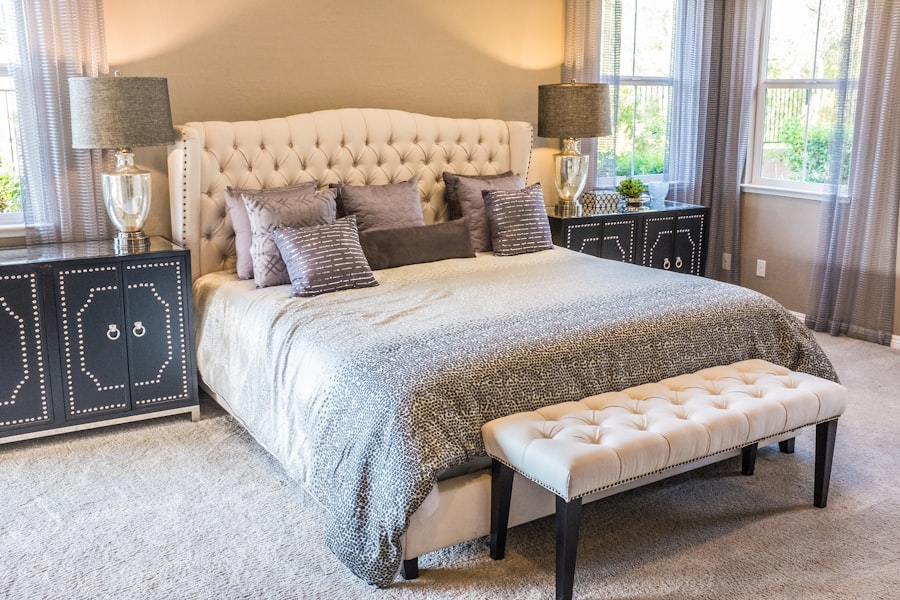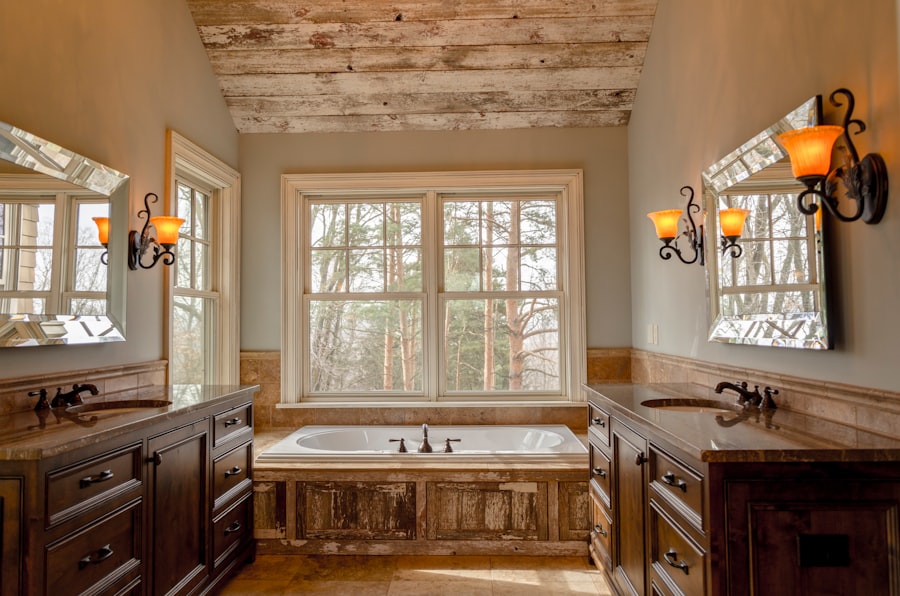Mansions are often defined by their impressive size, which is typically measured in square footage and acreage. While there is no universally accepted standard for what constitutes a mansion, many real estate experts agree that a residence must exceed 5,000 square feet to be classified as such. This threshold can vary based on regional norms and cultural perceptions of luxury.
For instance, in urban areas where space is at a premium, a 5,000-square-foot home may be considered a mansion, while in more rural settings, the same size might be viewed as modest. The concept of acreage also plays a crucial role in defining a mansion. Properties that encompass several acres of land not only provide privacy but also allow for expansive gardens, outdoor amenities, and even additional structures like guest houses or pools.
The relationship between square footage and acreage is particularly significant when considering the overall experience of living in a mansion. A sprawling estate with extensive grounds can create a sense of grandeur that transcends the interior space alone. For example, a mansion situated on 10 acres may feature walking paths, manicured lawns, and outdoor entertainment areas that enhance the lifestyle of its inhabitants.
Conversely, a mansion located on a smaller plot may rely more heavily on its architectural design and interior layout to convey luxury. This interplay between size and land can influence not only the aesthetic appeal of a mansion but also its market value, as properties with larger acreage often command higher prices due to their exclusivity and potential for development.
Key Takeaways
- Mansion size is typically measured in square footage and acreage, with larger mansions often having more rooms and amenities.
- Mansions commonly feature grand layouts and designs, including multiple bedrooms, bathrooms, and entertainment spaces.
- Luxury features such as swimming pools, home theaters, and wine cellars are common additions in mansions.
- The size and design of mansions have evolved over time, reflecting changes in architectural styles and societal norms.
- Mansions vary in size and style around the world, with regional differences in architecture and luxury features.
Layout and Design: Rooms and Amenities Found in Mansions
Architectural Hallmarks
ceilings, intricate moldings, and large windows are hallmarks of mansion architecture, allowing for an abundance of natural light and creating an atmosphere of opulence.
Specialized Spaces
In addition to traditional rooms, many mansions incorporate specialized spaces that cater to modern lifestyles. Home theaters, libraries, wine cellars, and fitness centers are increasingly common in luxury residences. These amenities not only enhance the living experience but also reflect the personal interests and lifestyles of the homeowners.
Personalized Living
For instance, a mansion with a dedicated art studio may appeal to creative individuals, while one with a state-of-the-art kitchen could attract culinary enthusiasts. The thoughtful integration of these spaces into the overall design of the mansion is essential for creating a cohesive and functional living environment.
Luxury Features: Common Additions in Mansions

Luxury features are what truly set mansions apart from other high-end homes. These additions often include high-end finishes such as marble countertops, custom cabinetry, and designer fixtures that elevate the aesthetic quality of the space. Smart home technology has also become a staple in modern mansions, allowing homeowners to control lighting, security systems, climate control, and entertainment systems with ease.
This integration of technology not only enhances convenience but also contributes to energy efficiency and security. Outdoor living spaces are another hallmark of luxury in mansions. Many properties boast expansive patios, outdoor kitchens, infinity pools, and landscaped gardens that create an inviting atmosphere for entertaining or relaxation.
Features such as fire pits, hot tubs, and even private tennis courts can be found in some of the most exclusive estates. These outdoor amenities extend the living space beyond the walls of the home and allow residents to enjoy their surroundings in comfort and style. The combination of indoor luxury features with outdoor enhancements creates a holistic living experience that is synonymous with mansion life.
Historical Perspective: Evolution of Mansion Size and Design
The concept of mansions has evolved significantly over the centuries, influenced by cultural shifts, economic factors, and architectural trends. In the 18th and 19th centuries, mansions were often built as symbols of wealth and power by aristocrats and industrialists. These grand homes featured elaborate designs inspired by classical architecture, with ornate facades, expansive gardens, and intricate detailing that showcased the owner’s status.
The Gilded Age in America saw the construction of some of the most iconic mansions, such as The Breakers in Newport, Rhode Island, which exemplified the opulence of the time. As society progressed into the 20th century, the design of mansions began to reflect changing tastes and lifestyles. The Arts and Crafts movement emphasized simplicity and craftsmanship over ostentation, leading to more understated yet elegant designs.
Post-World War II saw a shift towards modernism, with clean lines and open floor plans becoming popular among affluent homeowners. Today’s mansions often blend traditional elements with contemporary design principles, resulting in unique structures that cater to both aesthetic preferences and functional needs. This evolution illustrates how mansions have adapted to reflect societal values while maintaining their status as symbols of luxury.
Regional Variations: Differences in Mansion Size and Style Around the World
Mansion size and style can vary dramatically across different regions of the world due to cultural influences, climate considerations, and local architectural traditions. In Europe, for instance, mansions often reflect historical styles such as Tudor or Mediterranean architecture.
The grandeur of French châteaux or Italian villas showcases intricate stonework and expansive gardens that are deeply rooted in their respective histories.
In contrast, American mansions may draw inspiration from colonial styles or modern designs that emphasize spaciousness and functionality. In Asia, particularly in countries like China and Japan, mansions may incorporate elements of Feng Shui or traditional aesthetics that prioritize harmony with nature. The use of natural materials such as wood and stone is common in Japanese architecture, while Chinese mansions often feature courtyards that serve as central gathering spaces for families.
These regional variations highlight how local customs and environmental factors shape the design and size of mansions around the globe. Understanding these differences provides insight into how cultural identity is expressed through architecture.
Environmental Impact: Considerations for Building and Maintaining a Mansion

Sustainable Building Practices
Sustainable building practices are becoming increasingly important as homeowners seek to minimize their ecological footprint. This includes using eco-friendly materials, implementing energy-efficient systems such as solar panels or geothermal heating, and designing landscapes that require less water.
Site Selection and Landscaping
The location of a mansion can have profound implications for its environmental impact. Building on previously undeveloped land can disrupt local ecosystems and wildlife habitats. As such, many modern mansion projects prioritize sustainable site selection that considers biodiversity preservation and minimizes disruption to natural landscapes. Additionally, maintaining large properties often requires extensive landscaping efforts that can lead to increased water usage and pesticide application if not managed responsibly.
Towards Environmentally Conscious Luxury Living
Homeowners are increasingly aware of these challenges and are seeking ways to create luxurious living spaces that align with environmental stewardship.
While the terms “mansion” and “estate” are often used interchangeably in casual conversation, they denote distinct concepts within real estate terminology. A mansion refers specifically to a large residential structure characterized by its size, architectural style, and luxury features. In contrast, an estate encompasses not only the mansion itself but also the surrounding land and any additional structures or amenities present on the property.
Estates can vary widely in size but typically include extensive grounds that may feature gardens, guest houses, stables, or recreational facilities such as tennis courts or swimming pools. The distinction is particularly relevant when considering properties designed for entertaining or hosting events; estates often provide ample space for outdoor activities or gatherings that extend beyond the main residence. Understanding this difference is crucial for buyers or investors looking to navigate the luxury real estate market effectively.
The Future of Mansions: Trends in Size, Layout, and Luxury Features
As societal values continue to evolve alongside technological advancements, the future of mansions is likely to reflect these changes in size, layout, and luxury features. One notable trend is the increasing preference for smaller yet more efficient homes that prioritize sustainability over sheer size. Many affluent buyers are now seeking properties that offer smart home technology integrated with energy-efficient systems while still providing luxurious amenities.
Additionally, open floor plans are becoming more popular as homeowners desire spaces that promote connectivity among family members while allowing for flexible use of areas within the home. This shift towards multifunctional spaces can be seen in modern designs that incorporate home offices or wellness areas into traditional layouts.
Furthermore, outdoor living spaces are expected to continue gaining prominence as people seek ways to connect with nature while enjoying their homes.
In conclusion, the future of mansions will likely be characterized by a blend of luxury with sustainability and functionality. As new generations enter the market with different priorities than their predecessors—such as environmental consciousness—builders will need to adapt their designs accordingly to meet these evolving demands while still delivering on the promise of opulence associated with mansion living.
If you’re interested in luxury homes and high-end features, you may also want to check out this article on the Nissan Skyline GT-R R34 full specs. Just like mansions, this iconic car is known for its impressive size, layout, and luxury features. Whether you’re into real estate or automotive design, both articles offer fascinating insights into the world of high-end living.
FAQs
What is the average size of a mansion?
The average size of a mansion can vary depending on location and architectural style, but it typically ranges from 5,000 to 20,000 square feet.
What are some common features found in mansions?
Common features found in mansions include multiple bedrooms and bathrooms, grand entryways, formal living and dining rooms, gourmet kitchens, home theaters, libraries, and expansive outdoor spaces such as pools, gardens, and tennis courts.
How does the layout of a mansion differ from a regular home?
Mansions often have a more spacious and grandiose layout compared to regular homes, with larger rooms, higher ceilings, and more elaborate architectural details. They may also include separate wings or guest quarters for added privacy and luxury.
What defines a luxury mansion?
A luxury mansion is typically defined by its high-end amenities, custom finishes, and exceptional craftsmanship. It may also be situated on a large estate or feature breathtaking views, adding to its exclusivity and prestige.
What are some of the largest mansions in the world?
Some of the largest mansions in the world include the Biltmore Estate in North Carolina, the Oheka Castle in New York, and the Hearst Castle in California, all of which boast tens of thousands of square feet of living space and extensive grounds.

